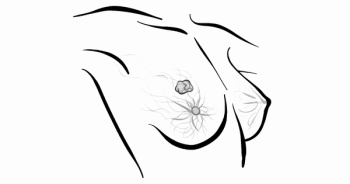
Larotrectinib Shows Durable Responses, Safety in TRK Fusion Thyroid Carcinoma
An updated analysis on larotrectinib showed compelling data in TRK fusion thyroid carcinoma.
An updated analysis on larotrectinib (Vitrakvi) for patients with TRK fusion thyroid carcinoma showed compelling data on the agent’s efficacy and safety, including a high and durable response rate and a manageable safety profile.1
Of the 31 patients included in the analysis, the overall response rate (ORR) was 65% (95% CI, 45%-81%), which included 3 (10%) complete responses, 17 (55%) partial responses (PR), 5 (16%) cases of stable disease (SD), 4 (13%) cases of progressive disease (PD), and 2 (6%) not evaluable. Patients with differentiated thyroid carcinoma (DTC) had an ORR of 79% (95% CI, 58%-93%), and for patients with anaplastic thyroid carcinoma (ATC), the ORR was 14% (95%, CI 0%-58%). The median time to response for all patients was 1.9 months (range, 1.6-16.2), and the median duration of treatment was 31 months (range, 1-88).
The median duration of response was 35 months (95% CI, 19-not estimable [NE]), the progression-free survival was 39 months (95% CI, 17-NE), and the overall survival (OS) was not reached (95% CI 28-NE) at median follow-ups of 48, 42, and 68 months, respectively. For patients with DTC, the median OS was not reached (95% CI 56-NE), and was 9 months (95% CI, 3-NE) for patients with ATC. At 6 years, the OS rate for all patients was 60% (95% CI, 41%-79%) compared with 71% (95% CI, 50%-91%) for those with DTC and 17% (95% CI, 0%-46%) for those with ATC.
Treatment‑related adverse events (TRAEs) were predominantly grade 1to 2 and grade 3 to 4 TRAEs were reported in 5 (16%) patients, including increased weight in 2 patients, anemia, decreased lymphocyte count, and hepatic cytolysis in 1 patient each. No patients discontinued treatment due to TRAEs.
“Lareotrectinib demonstrates rapid and durable responses, extended survival, and a favorable safety profile in patients with TRK fusion DTC,” study authors wrote in a poster presented at the
This updated analysis builds upon the established understanding of TRK fusions and the role of larotrectinib. TRK fusions are known oncogenic drivers found in various solid tumors, including a subset of thyroid carcinomas.
About Larotrectinib
Larotrectinib is a highly selective and central nervous system-active TRK inhibitor, approved for adult and pediatric patients with solid tumors harboring an NTRK gene fusion. Prior data has consistently demonstrated the efficacy and safety of larotrectinib in patients with TRK fusion solid tumors, including those affecting the thyroid.
This current updated analysis specifically aims to provide further, more refined insights into larotrectinib's performance within the TRK fusion thyroid carcinoma patient population, solidifying its position as a critical treatment in the oncologist's armamentarium.
Methods and Design of the Analysis
Patients with TRK fusion thyroid carcinoma were enrolled in the analysis. These patients were included in 1 of 3 clinical trials evaluating larotrectinib (NCT02576431, NCT02122913, NCT02637687).
Larotrectinib was given to patients at a dose of 100 mg twice daily (BID) to adults; 2 pediatric patients received 100 mg/m2 BID (maximum dose 100 mg BID). Responses were independent review committee (IRC)-assessed per RECIST v1.1, and ORR was the primary end point. Secondary end points were DOR, PFS, OS, and safety.
At the data cutoff date of July 20, 2024, 31 patients were enrolled, including 24 (77%) patients with DTC and 7 (23%) with ATC. The median age of patients was 60 years (range, 6-80), the majority of patients were female (71%), and the median time since initial cancer diagnosis was 5 years (range, 0-46). A total of 17 (55%) patients were systemic treatment naive in the metastatic/unresectable setting. Six (19%) patients received at least 2 prior therapies, and 24 (77%) were given previous treatment with radioiodine. All NTRK gene fusions were identified by next-generation sequencing.
Seven (23%) patients remained on treatment at the time of the data cutoff, 5 of whom had disease control.
“These results demonstrate that larotrectinib is an effective treatment option for patients with TRK fusion [thyroid carcinoma]. Testing patients for NTRK gene fusions is important for early identification of those who may benefit from this precision therapy,” the study authors concluded.









































